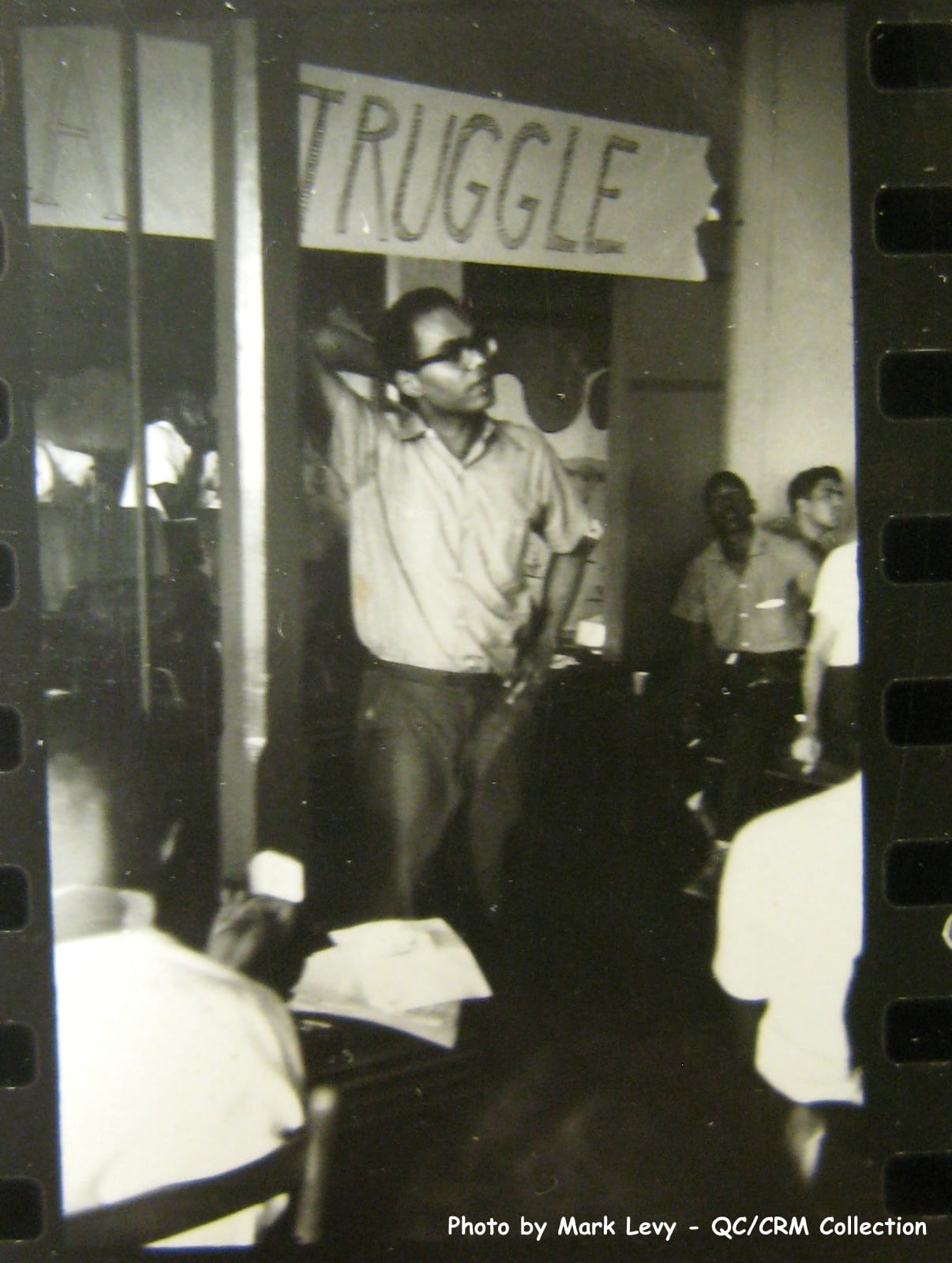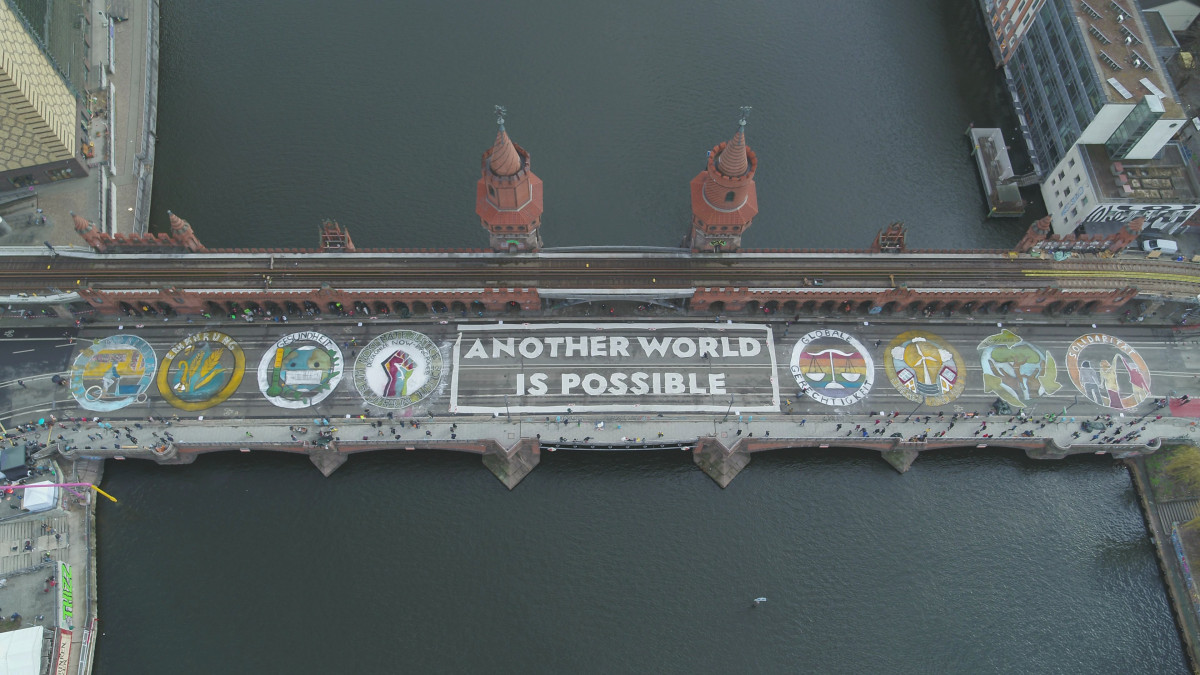
Photo from The Algebra Project website, https://algebra.org/wp/bob-moses/
Yesterday, in Cambridge, Massachusetts, a private memorial service was held to honor Robert Parris Moses (January 23, 1935 – July 25, 2021). Bob Moses was an immense leader of the Black Freedom Movement in America, who inspired countless people to take action for racial justice, and encouraged our nation to live up to its highest ideals of democracy, equality and inclusion. Yesterday’s memorial service was a deeply moving tribute to Bob’s life and the profound impact he had on so many people, and on our country.
The Moses family and Saint Mary’s Catholic Church in Cambridge generously shared the service with everyone via livestream. For those who were not able to attend the service virtually, you can watch the video here.
(Note, the sound doesn’t come on until the 26 minute mark, when the Moses family is introduced.)
Bob’s wife, Dr. Janet Jemmott Moses, and Bob’s children Maisha Moses, Omo Moses, Taba Moses and Malaika Moses, each spoke with such depth of love, compassion and vision, surrounded by Bob’s beautiful grandchildren. The Moses family powerfully carries on Bob’s legacy, with immense dignity and grace.
Other speakers at the service included several dear friends of Bob and the family: the activist and actor Danny Glover; Ben Moynihan, who worked closely with Bob Moses to on the Algebra Project leadership team for three decades, and the philosopher activist Dr. Cornel West.
“Listening to our collective reflections we are vividly reminded that in his public life Bob worked tirelessly to create opportunities for the transformation of people and communities,” Ben Moynihan reflected. “So on behalf of the Algebra Project team we remain steadfast in stewarding Bob’s vision in using mathematics as an organizing tool to guarantee quality education for all children in America.”
Following powerful singing, Dr. West emphasized, “I come from a tradition that says that the spirit will not descend without song.” Calling Bob Moses as “a spiritual genius of the highest order” and “an intellectual titan linking the world of ideas to action,” Dr. West continued:
“I’m going to say about him what I heard him say about Martin Luther King, Jr., that he was a mighty wave in a large ocean who bequeathed to him the highest level of what the Greeks call Arête (ἀρετή), what we call excellence, what we call vision, what we call courage, and, most importantly, what we call love.”
Dr. West placed Bob Moses in the lineage of the great “love warriors” of the Black tradition in America that includes Harriet Tubman, Sojourner Truth, Ida B. Wells, Rev. Martin Luther King, Jr. and Malcolm X.
“He decided to be a love warrior in the face of all of that white supremacist hatred coming at him, straightening his back up. Martin used to say any time an oppressed people straighten their backs up you’re going somewhere because folks can’t ride your back unless its bent…
What is this, this fire in me that won’t allow me to hold my peace? Whatever it is, whatever it is, I’m going to bear witness to it. That’s Bob Moses, with his quiet dignity… He wasn’t in it for popularity, he was in it for integrity. He wasn’t in it for prosperity, he was in it for magnanimity. He wasn’t in it because somehow it would make him more visible. No, he wanted invisible love that would have an impact on the least of these…
How are you going to give everything, and then give some more? Ask Bob Moses. That’s what he did every day. What real greatness is. The scope of your love.
We are here to allow the best of his life and his afterlife to be part of our lives.
We are not here to be spectators, we are here to be participants — in forces for truth and goodness and beauty coming out of the great tradition of Black people that must go on. Why? Because the Black freedom struggle has been the leaven in the American democratic loaf — it would have gone stale a long ago if it weren’t for Black freedom fighters like Bob Moses.
You can be sweet, and kind, and gentle and loving and still be a strong freedom fighter, and still be able to sacrifice, always organizing like Ella Baker taught him, always mobilizing like Ella Baker taught him, but doing it in such a way that you are tied to what Sly Stone called “everyday people”…
The measure of Black progress is always going to be the least of these, always those wrestling with mass incarceration, decrepit school systems, inadequate health care, and unavailable child care — that is the measure, that is Bob Moses, let us forever try to live up to his standards, as he tried to live up to those who came before. And keep in our prayers the noble Moses family in all of their richness and all of their goodness.”
The spirit descended in this service, with music and song infused throughout.
At the conclusion, music created the transition from prayer to dance.
A drummer began with brushes, to evoke Bob’s subtle, quiet presence – leading to a solo of elegant jazz syncopation.
A procession of elders wearing bright red pants and golden African-resonant kaleidoscopic-patterned Joseph’s coats of many colors…
Vestments of spiritual royalty…
Walked through the church aisle with slow, meditative dance steps, a courtly procession, solemn, dignified, joined by the men of the Moses family…
Followed by the marching band, with its members in black suits, white shirts, black ties, black caps — trumpets, trombones, tuba, drums — singing out rhythms at once mournful and jubilant, prayerful, deeply-rooted music of grief and healing, liberation and joyful defiance, ceremonial music of pomp and circumstance fit for royalty…
Together leading the family and parishioners the church out to Norfolk Street to join a Second Line Parade for the entire community, in the deep New Orleans funeral tradition, into the street and into the community…
And to an afternoon celebration of music and singing, African dancing, African American tap dancing singing, tributes, and more music, at the Cambridge Central Square, and the announcement by the Moses family, and MIT and the Algebra Project and the Young People’s Project of the launching of the Bob Moses speaker series, with the first event on January 21, 2022 at MIT Media Lab, 75 Amherst Street, Cambridge MA, and other projects to further Bob’s life work and legacy — you can watch it all here:
https://www.facebook.com/CentralSquareBID/videos/289079216065853/
Bob Moses called us to take action to overcome the deeply entrenched system of racial inequality that has defined this country throughout its history, as the institution of chattel slavery morphed into the neo-slavery of extreme poverty and enforced illiteracy of the sharecropping system and Jim Crow segregation and terror, to the structures of mass incarceration and economic and educational inequality Dr. West spoke of at the memorial service.
“Historical inequities and disparities in our public schools, as across all our public systems, operate along a constitutional fault line – an embedded caste system – that we need to find our way across,” Moses said.
How do we find our way across?
The answer is leadership. But not leadership from above. Leadership from the community itself.
“Leadership is there in the people. You don’t have to worry about where your leaders are, how are we going to get some leaders. . . If you go out and work with your people, then the leadership will emerge.” Bob Moses
 |
Bob Moses at the statewide Freedom School conference in August, 1964In the Meridian Freedom School’s Baptist Seminary building.By Mark Levy, from the Zinn Education Project,https://www.zinnedproject.org/news/tdih/robert-moses-born/
On February 1, 1960, four Black students from North Carolina A & T College sat down at a Woolworth lunch counter in downtown Greensboro, North Carolina. The next day about two dozen students joined them, and new sit-in campaigns emerged in Nashville and other cities. By the end of February, students organized and joined sit-ins at more than thirty locations in seven states across the Jim Crow South. Throughout the next two months, more than 50,000 students joined them.

